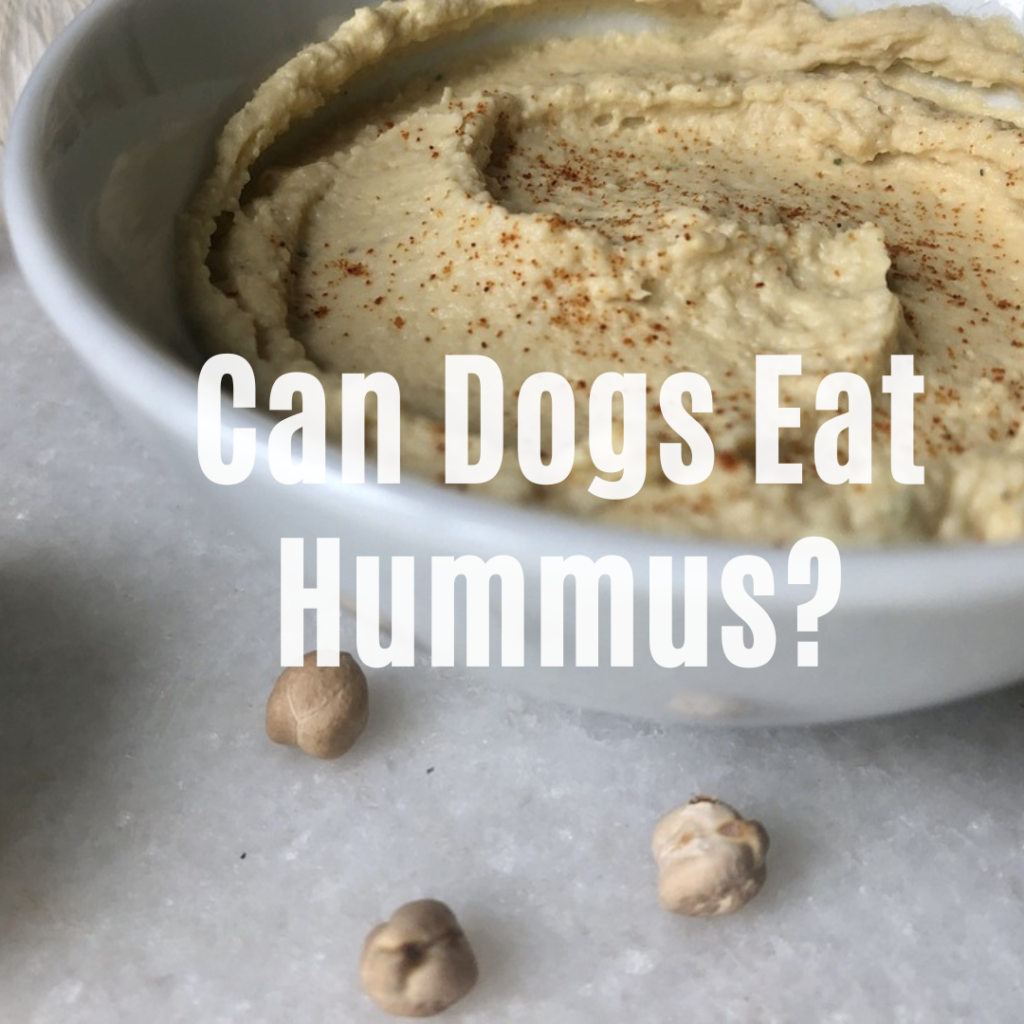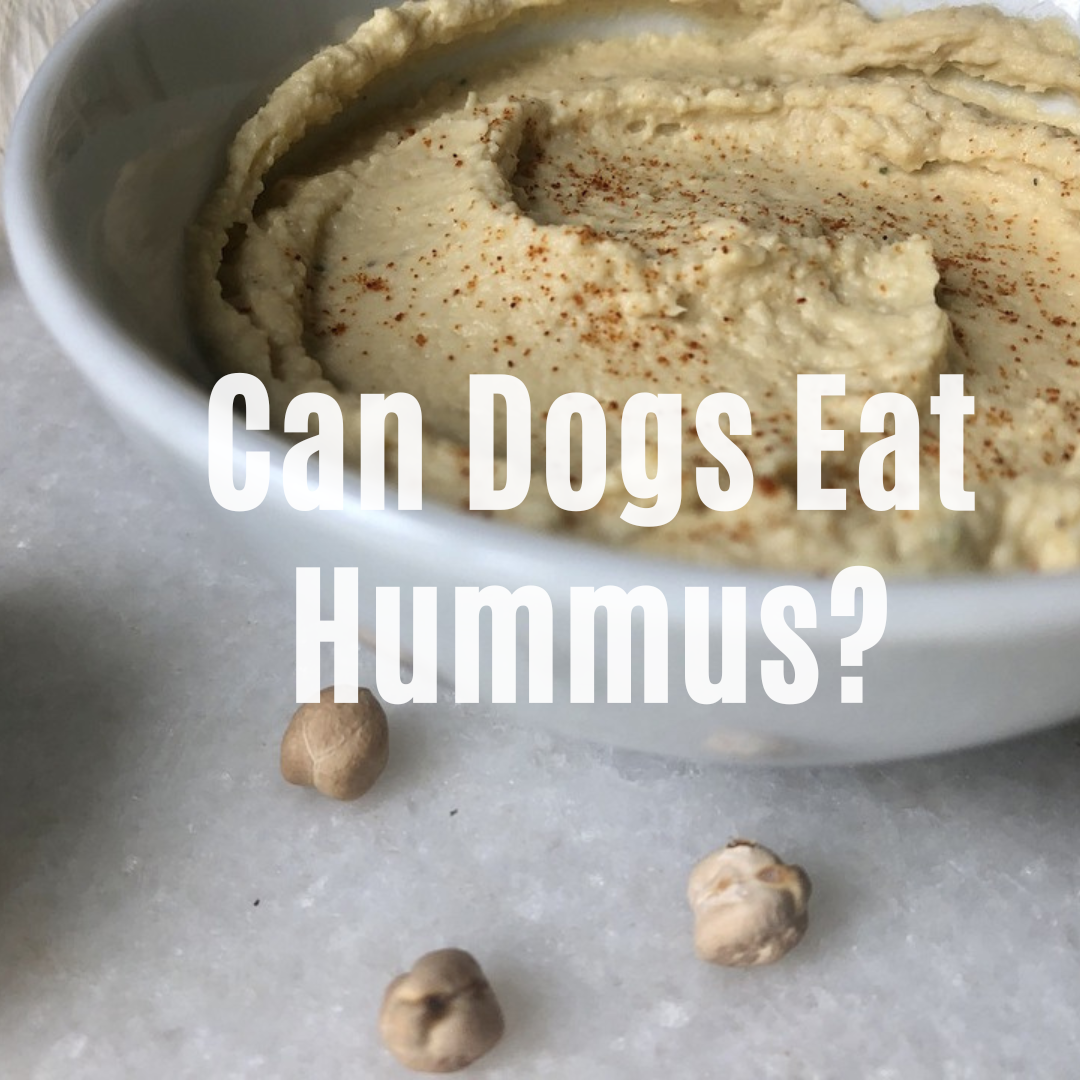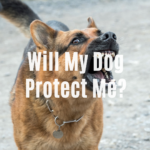
Can dogs eat hummus? No. Hummus usually contains ingredients that are toxic to dogs and should be avoided.
Both garlic and lemon juice are commonly used in hummus. Garlic is toxic to dogs and can cause anemia. Lemon juice is not considered poisonous but is not recommended either. It can cause gastric upset.
What is hummus?
- Hummus is a savory dip, spread, or side dish. It is commonly served with pita bread.
- Chickpeas are the main ingredient in hummus, but it also contains tahini, garlic, lemon juice, oil, and other flavorings.
- Hummus originated in the Middle East and the Mediterranean but has gained popularity across the globe for its delicious taste and nutritional benefits.
- It is high in fiber, protein, as well as many minerals and vitamins, making it a healthy option for humans in moderation.
Busy? Get Your Hands Paws On The Answers Quickly…
- Ingredients In Hummus Explained – Can Dogs Eat Them?
- What Should I Do If My Dog Eats Hummus?
- Hummus and Hummus Alternatives For Dogs
- Chickpea Dog Treats
- FAQs
INGREDIENTS IN HUMMUS EXPLAINED – CAN DOGS EAT THEM?
Chickpeas – Yes
Chickpeas, also known as garbanzo beans, are safe for dogs in moderation. They contain a considerable amount of carbohydrates, protein, and fiber.
Benefits of chickpeas:
- May help with weight loss – Chickpeas are relatively low in calories and fat, but packed with fiber. Snacking on chickpeas should keep your dog fuller for longer, thus aiding in weight loss.
- Prevent constipation – The fiber in chickpeas will help keep your dog regular. This will help prevent constipation and aid in anal gland expression.
- High source of plant-based protein – If you are feeding your dog a vegetarian or vegan diet (for health reasons, or as approved by a nutritionist or veterinarian), chickpeas can be a great source of protein. Protein helps maintain healthy muscles for your dog.
- Linked to helping with some conditions – Chickpeas contain vitamins and minerals thought to help with chronic conditions like cancer, diabetes, and heart disease in humans, there is no reason to believe these cannot be translated to our canines (link) (link).
There are many ways you can add chickpeas into your dogs’ diet, including using chickpea flour in treats, making dog-friendly hummus, or using cooked chickpeas in homemade dog food.
Tahini – Yes
Tahini is a paste made from sesame seeds. This is harmless to dogs in moderation. These seeds are calorie-dense, are high in fat, and contain a considerable amount of protein, vitamins, and minerals.
It can be baked into dog biscuits, or fed straight from the spoon (if you have a very active dog in need of the calories!). If your dog is overweight or has a slow lifestyle, it can cause weight gain quickly.
Garlic – No
Garlic belongs to the allium family, along with leeks, chives, and onions. All of these are toxic for dogs. Allium vegetables contain thiosulfate, humans can digest this, but dogs cannot. In canines, thiosulfate can damage the red blood cells, and this can lead to stomach upset and hemolytic anemia.
Signs Of Gastric Upset Include:
- Vomiting
- Diarrhea
- Drooling
Signs Of Anemia Include:
- Pale Gums
- Increased Heart Rate
- Lethargy
- Weakness
According to the American Kennel Club, studies have shown, it takes around 15g garlic per kg of body weight for harmful changes.
If your dog has ingested garlic and is displaying any worrying signs, contact the poison helpline or your veterinarian immediately.
Lemon Juice – No
The compound psoralens found in citrus fruit is known to be harmful to dogs. These toxins are not thought to be fatal but can cause gastric issues, including vomiting and diarrhea.
Lemons also contain citric acid, which, in large quantities can depress the central nervous system.
For this reason, it is best to avoid giving your dog any citrus fruit.
Olive Oil – Yes
Olive oil is ok for dogs in moderation. It is thought to help benefit their joints, heart, skin, coat, and brain. Olive oil can be added into your dog’s food, or baked into treats and biscuits.
WHAT SHOULD I DO IF MY DOG EATS HUMMUS?
It depends on the amount of hummus and the size and weight of your dog.
Garlic is the main toxin to be concerned about. Check the quantity of garlic the hummus.
As we saw earlier, it is thought to be around 15g garlic per 1kg of weight for harmful changes (link).
So if your dog weighs 10kg, you can determine it would take approximately 150g garlic to affect your dog.
On average, garlic weighs around 10-16g per clove.
Although garlic is rarely fatal to dogs, it is essential to know what to look for.
Signs of toxicity include:
- Diarrhea
- Vomiting
- Loss of appetite
- Dehydration
If your dog is expressing any of these signs, it is important to contact the veterinarian or poison helpline immediately.
HUMMUS AND HUMMUS ALTERNATIVES FOR DOGS
Peanut, Cashew or Almond Butter – These nut butters are thought to be safe for dogs in moderation. They are of a similar consistency to hummus and can be enjoyed with a piece of apple or carrot, stuffed into a KONG, applied to a lickmat, or baked into a healthy dog treat.
Make sure to use it sparingly as it is high in fat, and your dog may have some trouble digesting it. For more information, check out our articles Can Dogs Eat Almond Butter and Can Dogs Eat Peanut Butter.
Greek Yogurt – Greek yogurt is usually ok for dogs unless they are lactose intolerant. It is probiotic and thought to benefit your dogs’ gut health. It is also high in protein and calcium, beneficial to their muscles and bones.
How To Make Dog-Friendly Hummus
Step 1 – How To Cook Chickpeas:
Ingredients:
- Dry chickpeas
- Water
Directions:
1. Place the dry chickpeas in a large bowl and cover with cold water. Cover the bowl with a towel and leave to soak overnight.
2. The following day, drain and rinse the chickpeas in a colander. They should have doubled in size.
3. Boil a large pot of water (you will need around double the amount of water to soaked chickpeas) over medium-high heat and bring the water to a boil.
4. Add the chickpeas and allow to boil for 10 minutes. Remove and leave to stand for 90 minutes.
5. Once the chickpeas are soft, drain and rinse. Allow to cool.
Step 2 – How To Make The Hummus:
- 1 cup finely diced carrot
- 1 cup cooked chickpeas
- 3 tbsp coconut oil
- 3/4 cup water
Directions:
1. Fry the carrot in the coconut oil in a pan on medium-low heat for 5-7 minutes or until tender.
2. Add the cooked carrot to the blender and blitz until smooth.
3. Add the chickpeas and water and blend until a hummus-like consistency is formed.
CHICKPEA DOG TREATS
These recipes include chickpea flour. If you are unable to buy it from the grocery store, it is easy to make with dry chickpeas. Simply grind them in a food processor until a flour forms. The flour will need sieving to remove any lumps, which could pose a choking hazard to your dog.
Peanut Butter and Chickpea Treats, inspired by Kiki Kane
Ingredients:
- 1 cup chickpea flour, plus more for dusting (method above)
- 1/2 cup plain pumpkin puree
- 2 tbsp pure 100% peanut butter
Directions:
1. Preheat the oven to 350 degrees F (176 degrees C) and line a baking sheet with parchment paper.
2. Combine all the ingredients in a bowl and mix together.
3. Roll the mixture on a floured surface to 1/4-inch thickness.
4. Cut into treats appropriate for your dog’s size. Place on the baking sheet.
5. Bake for 18-25 minutes (depending on the size) or until golden and crisp.
6. Allow to cool before serving.
Chickpea and Chia Dog Snacks, inspired by The Honest Kitchen
Ingredients:
- 1 cup chickpea flour (method above)
- 1/2 cup cornmeal
- 1 tbsp chia seeds
- 1/2 cup boiling water
- 1 egg
Directions:
1. Preheat the oven to 350 degrees F (176 degrees C) and line a baking sheet with parchment paper.
2. Combine the dry ingredients in a bowl. Stir together.
3. Add the wet ingredients and mix until a dough forms.
4. Using your hands, scoop a treat-sized amount of mixture from the bowl. Roll it into a ball.
5. Place on the baking sheet and squish with a fork. Repeat for the remaining dough.
6. Bake for 20 minutes, or until golden.
Banana and Chickpea Dog Biscuits, inspired by Pet Guide
Ingredients:
- 2 cups chickpea flour
- 1 banana
- 3 tablespoons peanut butter
- 1 large egg
- 1 1/2 tablespoons flax meal
Directions:
1. Preheat the oven to 300 degrees F (148 degrees C) and line a baking sheet with parchment paper.
2. In a bowl, mix the 3 wet ingredients together until the banana is mashed and egg is mixed.
3. Add in the remaining dry ingredients and stir until a firm dough is formed.
4. Roll the mixture on a floured surface to 1/4-inch thickness.
5. Cut into treats appropriate for your dog’s size. Place on the baking sheet.
6. Bake for 15-20 minutes (depending on the size) or until golden and crisp.
7. Allow to cool before serving.
FAQS
Is hummus harmful to dogs?
It can be if your dog has ingested a large amount containing garlic and lemon. Look out for signs of toxicity and contact your vet if you are concerned.
Can hummus kill dogs?
It is unlikely. Garlic is the main toxin in hummus, and is not usually fatal to dogs, but can have some nasty side effects. The effects depend on the quantity consumed and the size and weight of your dog.
Are chickpeas toxic to dogs?
No. Chickpeas are high in both protein and fiber. They are commonly added to commercial dog food.
My dog ate red pepper hummus… What do I do?
It depends on the amount. Red peppers are healthy for dogs. It is the garlic content you should be concerned about. Check out our section above on What Should I Do If My Dog Has Hummus? the same applies for red pepper hummus. If you are concerned or your dog is behaving unusually, contact your veterinarian.
Can dogs eat tahini?
Yes, in moderation, it is thought to be safe. However, it is high in fat.
Can dogs eat falafel?
No, falafel commonly contains high levels of sodium, along with other added ingredients, such as garlic and onion that are toxic.
Looking for more pawsome posts? Check these out…
Can Dogs Eat Lettuce?
How To Make A Snuffle Mat
When Do Puppies Lose Their Teeth?
Can Dogs Eat Broccoli?
Can Dogs Eat Watermelon?
Disclaimer: Each dog is different, and every circumstance is different. All efforts have been made to provide accurate information. However, it is not provided by a qualified Veterinarian, Veterinarian Surgeon, or Behaviorist. The information provided is purely educational. The information should not be used as an alternative or substitute for medical care. If you have any health or medical concerns, contact a qualified Veterinary Surgeon or Veterinarian immediately.










No Comment! Be the first one.